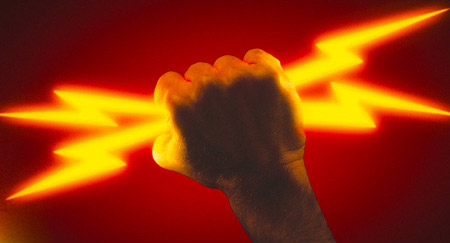Energiewende: What Germany’s Green Energy Revolution Means for U.S.
 Many of you are probably headed to the Sierra Club's Earth Wind and Fire energy get together this coming weekend in Addison. As a kind of primer on how greener, cleaner energy could flourish in the US and what it would mean to the way we produce, distribute, regulate and charge for power, you might want to check out this New York Times piece from earlier in the month on how Germany is turning the corner.
Many of you are probably headed to the Sierra Club's Earth Wind and Fire energy get together this coming weekend in Addison. As a kind of primer on how greener, cleaner energy could flourish in the US and what it would mean to the way we produce, distribute, regulate and charge for power, you might want to check out this New York Times piece from earlier in the month on how Germany is turning the corner.
Deutschland is close to getting 30% of its energy needs from renewable sources, by far the leader among heavily industrialized nations – America is currently achieving about half that. That's impressive, but by far the most interesting parts of the story is what kind of ripples in the marketplace a commitment to green power can produce once a government decides to make that commitment.
For example, it's in large part due to German demand for solar that the prices of Chinese solar panels have plummeted, making the choice cheaper for everyone else around the planet. Likewise, more off shore wind power is being built to correspond to the daylight hours when it's needed most by consumers and those prices are also coming down thanks to German leadership.
Especially noteworthy is the anxiousness of utility companies who see their old business plan of large, centralized power systems evaporating with the rise of so many smaller, decentralized options. As the article states:
"A reckoning is at hand, and nowhere is that clearer than in Germany. Even as the country sets records nearly every month for renewable power production, the changes have devastated its utility companies, whose profits from power generation have collapsed.
Some experts say the electricity business is entering a period of turmoil beyond anything in its 130-year history, a disruption potentially as great as those that have remade the airlines, the music industry and the telephone business."
Among the strategies in play are "energy retainers" – regular payments to persuade utilities to keep some fossil-fuel power plants on standby for times when renewable sources lag. That's a complete upside down pyramid approach from previous years that saw those same older plants used as "base load" facilities with renewables supplementing them when necessary.
And while the sources of power are changing as a result of this energy revolution, so are the ways people use it. In Texas' deregulated electricity market, you're already seeing different pricing for different times of day so that consumers take better advantage of non-peak hours. Appliances like dishwashers and water heaters with "smart chips" in them could automatically take advantage of these differences and level out demand.
Check out the NYT piece and then, for a more radical American perspective on the German energy revolution and how it can be translated into action on this side of the Atlantic by the guy that invented the term "negawatts" read Amory Lovins' take. Lovins has been at the forefront of alternative energy since before the term was created and what were once thought to be fanciful flights of imagination on his part by the utility companies are the reality they're now having to deal with.
